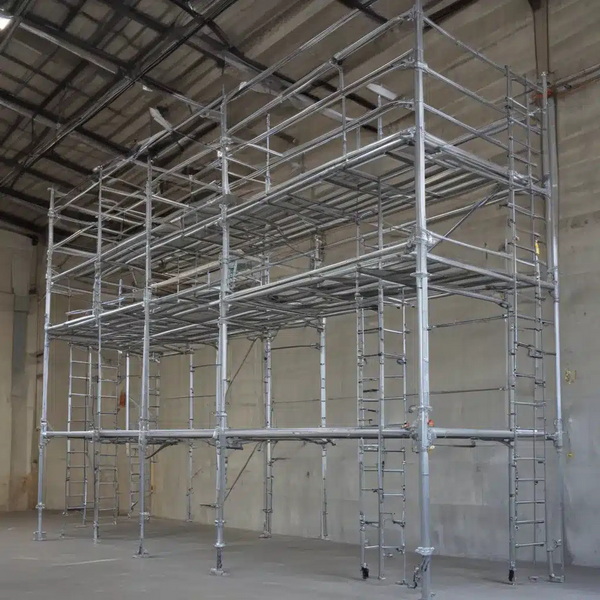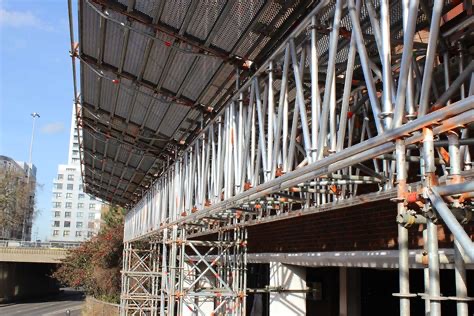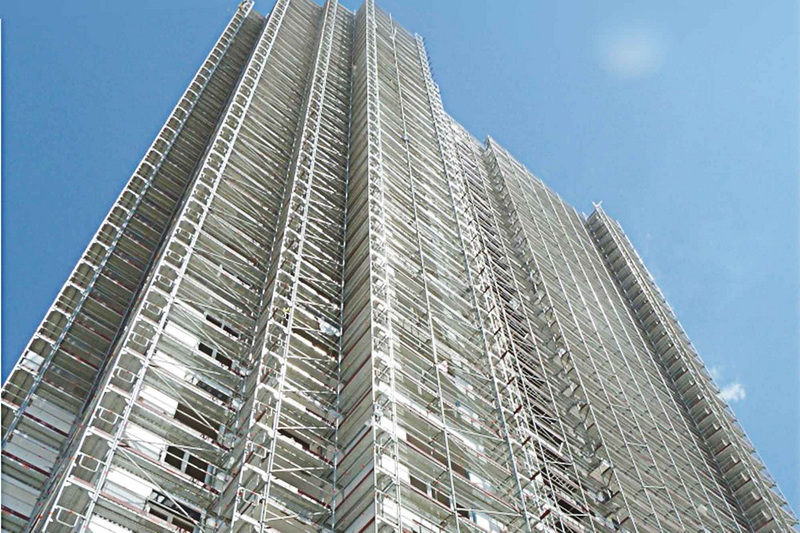Content Menu
● Introduction to Extensive Scaffolding Systems
● Key Components of Extensive Scaffolding Systems
● Cost Factors of Extensive Scaffolding Systems
>> Project Size and Complexity
>> Scaffolding Material and Design
>> Location and Accessibility
>> Project Duration
>> Safety and Regulatory Compliance
>> Labor Costs
● Calculating the Cost of an Extensive Scaffolding System
● Case Studies: Extensive Scaffolding Systems in Practice
>> High-Rise Construction
>> Infrastructure Projects
>> Industrial Construction
● Technological Innovations in Scaffolding
>> Modular Scaffolding Systems
>> Digital Planning Tools
● Environmental Considerations
● Sustainable Scaffolding Practices
● Conclusion
● FAQ
>> 1. What are the primary cost factors for an extensive scaffolding system?
>> 2. How does the choice of scaffolding material affect costs?
>> 3. What role does project duration play in scaffolding costs?
>> 4. How does safety compliance affect scaffolding costs?
>> 5. Can technological innovations reduce scaffolding costs?
● Citations:
An extensive scaffolding system is crucial for large-scale construction projects, providing a safe and efficient working platform for workers. However, the cost of such systems can be significant, influenced by various factors. In this article, we will explore these cost factors in detail, focusing on how they impact the overall expense of implementing an extensive scaffolding system.

Introduction to Extensive Scaffolding Systems
Extensive scaffolding systems are designed to support large-scale construction projects, including high-rise buildings, bridges, and industrial facilities. These systems are modular, allowing for easy assembly and disassembly, which is essential for projects that require scaffolding to be erected and dismantled multiple times.
Key Components of Extensive Scaffolding Systems
- Vertical Standards: These are the main uprights of the scaffolding structure, typically made from high-grade steel or aluminum.
- Ledgers: Horizontal tubes that connect to the vertical standards, providing a framework for the scaffolding.
- Cups and Locking Mechanisms: These secure the ledgers to the standards, ensuring stability and safety.
- Boards and Planks: Provide a working platform for workers.
- Braces and Ties: Add stability to the structure.
Cost Factors of Extensive Scaffolding Systems
Project Size and Complexity
The size and complexity of a project are primary cost factors. Larger projects require more extensive scaffolding structures, which means more materials and labor are needed for assembly and maintenance. Complex projects may necessitate specialized scaffolding configurations, further increasing costs.
Scaffolding Material and Design
The choice of scaffolding material—such as steel, aluminum, or timber—affects costs. Steel is generally more affordable but heavier, while aluminum is lighter and more expensive. Customized designs for complex projects can also drive up costs.
Location and Accessibility
The geographical location and accessibility of the site impact costs. Remote or hard-to-reach locations require specialized access solutions, increasing setup costs. Local suppliers can help reduce transportation expenses.
Project Duration
The duration of the project affects scaffolding costs. Longer projects often result in higher total costs due to extended rental periods or increased material wear. However, longer rentals can lead to reduced daily rates.
Safety and Regulatory Compliance
Ensuring compliance with safety regulations is essential but can add costs. This includes training for assembly and disassembly, regular inspections, and liability insurance.
Labor Costs
Labor costs are significant, as assembling and disassembling scaffolding is labor-intensive. The cost of labor varies by location and can be influenced by local market rates.

Calculating the Cost of an Extensive Scaffolding System
Calculating the cost involves considering the area covered by the scaffolding, the height of the structure, and the type of scaffolding required. The formula for calculating the area is:
Area=Height×Perimeter
Case Studies: Extensive Scaffolding Systems in Practice
High-Rise Construction
In high-rise construction, extensive scaffolding systems are used to support multiple levels of work. The stability and safety of these systems are critical for ensuring worker safety and project efficiency.
Infrastructure Projects
For infrastructure projects like bridges and tunnels, extensive scaffolding systems provide access for workers to install complex structures. The durability and stability of these systems are essential for handling heavy loads.
Industrial Construction
In industrial settings, extensive scaffolding systems are used for the construction of refineries, power plants, and factories. These systems must support heavy machinery and materials, requiring high-strength scaffolding components.
Technological Innovations in Scaffolding
Advancements in technology are transforming the scaffolding industry by improving efficiency, safety, and cost-effectiveness. For instance, modular scaffolding systems with advanced locking mechanisms reduce assembly time and enhance stability. Additionally, digital tools and software can streamline the planning and execution of scaffolding installation, further optimizing project timelines.
Modular Scaffolding Systems
Modular systems allow for quick assembly and disassembly, reducing labor costs and project timelines. These systems are highly versatile and can be customized for complex projects.
Digital Planning Tools
Digital tools enable precise planning and simulation of scaffolding layouts, helping to minimize material waste and optimize scaffolding configurations. This can lead to significant cost savings by reducing unnecessary components.
Environmental Considerations
Extensive scaffolding systems can have environmental impacts, such as material waste and carbon emissions from transportation. However, using locally sourced materials and optimizing scaffolding designs can help mitigate these effects.
Sustainable Scaffolding Practices
Implementing sustainable practices, such as reusing scaffolding components and minimizing waste, can reduce the environmental footprint of construction projects. This aligns with global efforts to make construction more sustainable.
Conclusion
The cost of an extensive scaffolding system is influenced by several key factors, including project size and complexity, material choice, location, project duration, safety compliance, and labor costs. Understanding these factors is crucial for effective budgeting and project planning. As construction projects continue to grow in scale and complexity, the demand for efficient and safe scaffolding solutions will remain high.

FAQ
1. What are the primary cost factors for an extensive scaffolding system?
The primary cost factors include project size and complexity, scaffolding material and design, location and accessibility, project duration, safety and regulatory compliance, and labor costs.
2. How does the choice of scaffolding material affect costs?
The choice of material affects costs due to differences in durability, weight-bearing capacity, and price. For example, aluminum is more expensive than steel but offers advantages in terms of weight and ease of handling.
3. What role does project duration play in scaffolding costs?
Project duration impacts costs as longer projects require scaffolding to remain in place for extended periods, potentially leading to higher rental fees. However, longer rentals can result in reduced daily rates.
4. How does safety compliance affect scaffolding costs?
Safety compliance adds costs through training, regular inspections, and liability insurance. These expenses are necessary to ensure worker safety and avoid legal penalties.
5. Can technological innovations reduce scaffolding costs?
Yes, technological innovations such as modular systems and digital planning tools can reduce scaffolding costs by improving efficiency, reducing labor time, and optimizing material usage.
Citations:
[1] https://scaffoldtype.com/scaffolding/
[2] https://www.safetyandhealthmagazine.com/articles/13678-the-cost-of-scaffolding
[3] https://scaffoldtype.com/scaffolding-price/
[4] https://rapid-scafform.com/how-to-calculate-the-rate-of-scaffolding/
[5] https://scaffoldingcost.com/calculating-scaffolding-costs/
[6] https://www.linkedin.com/pulse/estimating-scaffolding-costs-factors-consider-abdelrahman-elkholly
[7] https://scaffoldtype.com/cost-of-scaffolding/
[8] https://businessplan-templates.com/blogs/running-costs/scaffold-manufacturing
[9] https://southernscaffolding.com/breaking-down-the-costs-of-industrial-scaffolding-services-what-you-need-to-know/
[10] https://www.ajbuildscaffold.com/factors-affecting-scaffolding-cost-per-square-foot






















